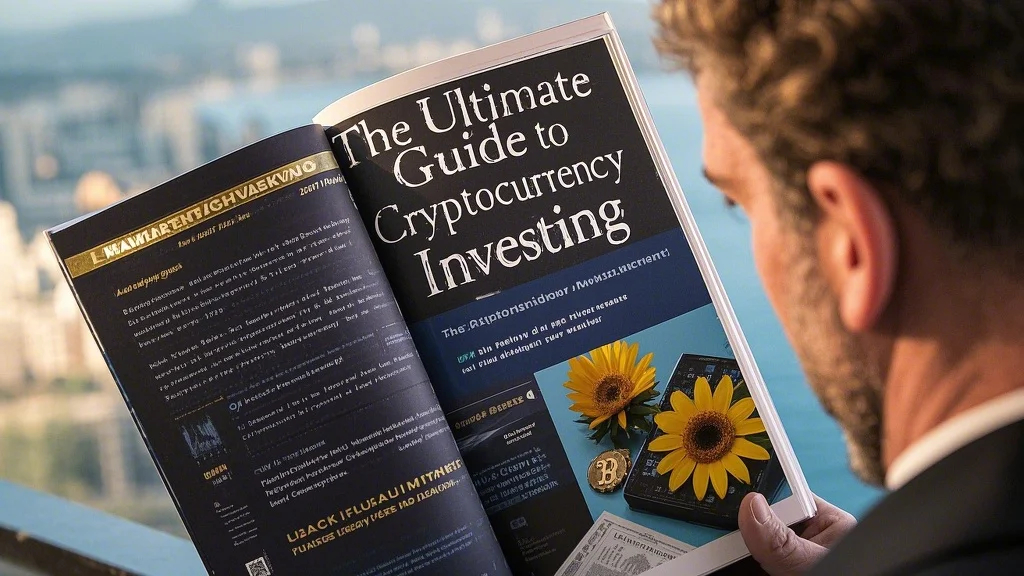Understanding the Cryptocurrency Landscape
Entering the world of cryptocurrency investing requires more than just following hype or celebrity endorsements. The digital asset space has matured significantly since Bitcoin’s early days, now encompassing thousands of projects with varying degrees of utility and potential. Unlike traditional markets that operate within established frameworks, crypto markets never close, creating both opportunities and risks that demand constant vigilance. Successful investors approach this space with a blend of technological understanding, market awareness, and old-fashioned risk management principles.
The volatility that characterizes cryptocurrency markets can produce dramatic gains but equally stunning losses. This extreme price action separates disciplined investors from speculators. Those who thrive in this environment typically combine fundamental analysis of blockchain projects with technical analysis of price patterns, while always maintaining strict position sizing rules. The decentralized nature of these assets means traditional valuation metrics often don’t apply, requiring investors to develop new frameworks for assessing worth based on network activity, developer communities, and real-world adoption rates.
The Technology Behind Digital Assets
At the heart of every cryptocurrency lies blockchain technology, a revolutionary approach to record-keeping that eliminates the need for trusted intermediaries. These distributed ledgers provide transparency and security through cryptographic principles and network consensus mechanisms. Understanding the differences between proof-of-work and proof-of-stake systems, smart contract capabilities, and scaling solutions helps investors separate substantive projects from hollow marketing claims.
Blockchain’s potential extends far beyond digital currencies, with applications transforming industries from supply chain management to digital identity verification. Savvy investors examine not just the token economics but the actual problem a project aims to solve and the team’s ability to execute their vision. The technology stack matters as much as the whitepaper promises – projects with robust developer activity, clear roadmaps, and measurable milestones tend to outperform those relying solely on speculative trading interest over the long term.
Balancing Risk and Reward
The search for high return investments inevitably leads many to cryptocurrency markets, but the relationship between risk and potential reward requires careful navigation. While stories of early Bitcoin or Ethereum investors achieving life-changing returns abound, so do tales of devastating losses from failed projects or poorly timed trades. A balanced approach allocates only what one can afford to lose to the highest-risk crypto assets while maintaining more stable investments elsewhere.
Diversification within crypto holdings proves just as important as in traditional portfolios. Spreading investments across different sectors of the ecosystem – store-of-value assets, smart contract platforms, decentralized finance protocols, and non-fungible token projects – provides exposure to multiple growth areas while mitigating single-project risk. Dollar-cost averaging into positions rather than making lump-sum investments can help smooth entry points in these notoriously volatile markets. Setting clear profit-taking and loss-cutting strategies before entering trades prevents emotional decision-making during price extremes.

Comparing Digital and Physical Assets
While cryptocurrencies capture headlines, real estate investing continues offering tangible value as both an inflation hedge and income generator. The contrast between these asset classes highlights important portfolio construction considerations. Physical property provides stable cash flow and collateral value but lacks liquidity and requires active management. Cryptocurrencies trade instantly but produce no intrinsic cash flow and carry substantial volatility. Many investors find combining both creates complementary exposures in a diversified portfolio.
Emerging blockchain applications are beginning to bridge these worlds through tokenized real estate offerings that provide fractional ownership of physical properties. These innovations aim to combine real estate’s stability with crypto’s liquidity, though regulatory and practical challenges remain. As with any investment, understanding the underlying value proposition matters more than chasing novel structures. Whether investing in brick-and-mortar properties or their digital representations, thorough due diligence on location, cash flows, and management quality separates successful investments from problematic ones.
Expanding Beyond Traditional Markets
Cryptocurrencies form just one category of alternative investments gaining attention as investors seek uncorrelated returns. From collectibles to private equity, these options typically fall outside standard stock-and-bond portfolios, offering diversification benefits when traditional markets struggle. The common thread among successful alternative investors involves specialized knowledge – whether evaluating rare art, early-stage startups, or commodity futures, expertise in niche areas often determines outcomes.
Allocation size remains crucial when incorporating alternatives into an investment strategy. While their low correlation to mainstream assets can reduce overall portfolio volatility, their illiquidity and valuation challenges warrant conservative position sizing. Many financial advisors recommend limiting alternatives to 10-20% of total holdings, with cryptocurrency representing just a portion of that allocation. As with any investment, understanding the mechanisms, risks, and realistic return potential before committing capital prevents unpleasant surprises when market conditions change.
Developing a Sustainable Crypto Strategy
Building lasting wealth through cryptocurrency requires more than riding market waves – it demands a structured approach tailored to individual circumstances. This begins with honest self-assessment of risk tolerance and investment horizon. Short-term traders focus on technical patterns and market sentiment, while long-term holders emphasize fundamental network value and adoption metrics. Neither approach proves universally superior, but blending them often leads to frustration rather than consistent results.
Security practices form the foundation of any crypto strategy, as the irreversible nature of blockchain transactions leaves little recourse for stolen or lost assets. Cold storage solutions for long-term holdings, rigorous verification processes before transacting, and careful selection of exchange partners all contribute to asset protection. Tax implications also demand attention, as many jurisdictions treat cryptocurrency differently than traditional securities. Consulting with professionals knowledgeable about digital assets can prevent costly compliance mistakes while optimizing after-tax returns.
The Evolving Future of Digital Finance
As institutional adoption grows and regulatory frameworks develop, cryptocurrency markets continue maturing beyond their speculative origins. This evolution creates both challenges and opportunities for investors. Projects with clear utility and sustainable models increasingly separate themselves from those relying solely on promotional hype. The integration of decentralized finance with traditional financial services hints at a future where blockchain technology operates seamlessly alongside conventional systems rather than in opposition to them.
Successful investors position themselves to benefit from this maturation while remaining vigilant about the risks inherent in any emerging asset class. Maintaining balanced exposure, staying informed about technological and regulatory developments, and avoiding emotional reactions to price volatility all contribute to long-term success. Cryptocurrency may represent the future of money, but timeless investment principles still apply – understand what you own, diversify appropriately, and invest rather than speculate with capital you can’t afford to lose.
